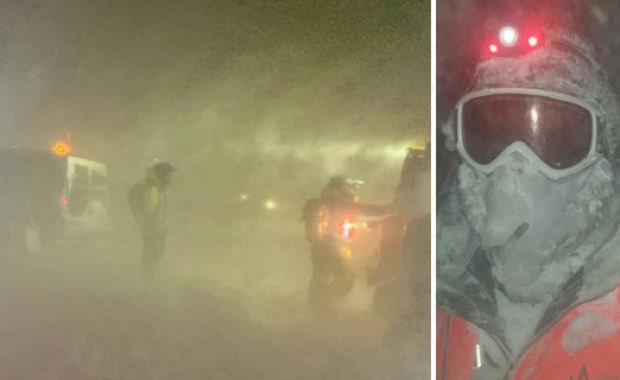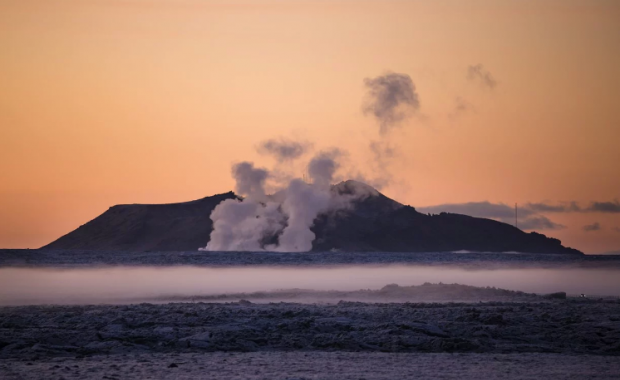On October 24 1974, Icelandic women observed what was called Kvennafrídagurinn, (The Women's Day Off), known outside Iceland as the Icelandic Women's Strike. It was estimated that at least 90% of Icelandic women participated by not going to work and by doing no housework. An estimated 25,000 women gathered for mass a demonstration in downtown Reykjavík. The total population of Iceland was only 216,695 at the time. Mass meetings and demonstrations were also organized in smaller towns around Iceland.
The Redstockings
The year 1975 had been declared the International Women's Year by the United Nations. Icelandic women's rights organizations, including representatives of the Redstockings, a group of radical feminists and women's rights activists, agreed that a women's general strike would be a powerful event. By walking off their jobs and refusing to do unpaid housework women could draw attention to their contribution to the economy and society.
In an effort to blunt the radical edge of the action and make the event more appealing to the mass of the population the planning committee settled on calling it a day off. The decision was also motivated by fear that if the action was called a strike women who participated could be accused of engaging in a wildcat strike. Since wildcat strikes are illegal in Iceland, women could be fired for participating in a strike but not a day off.
A giant gender pay gap
The action succeeded in paralyzing the Icelandic economy, forcing businesses and government offices to shut down. The next days local newspapers ran stories about men who had to do the dishes for the first time, bring their children with them to work and prepare dinner. Stores ran out of simple foods which only need boiling, like sausages (bjúgu) and hot dogs.
The impact of the strike was significant, as it helped change public opinion. A law was passed in 1976 banning wage discrimination on the basis of gender. The gender pay gap stood at more than 40% at the time: Women were paid less than 60% of what men were paid. According to the most recent data from Statistics Iceland the average wages of women are currently 74% of the average wages of men. The unexplained gender pay gap is smaller, or 4.5%.
Icelandic women have gone on strike five times since 1975, in 1985, 2005, 2010, 2016 and 2018. The 1975 Women's Strike has become an inspiration for women in other countries to organize similar action.
Áfram stelpur
A record containing feminist protest songs called Áfram stelpur (Onward Girls) was released on October 24. The title song, Áfram stelpur (Í augsýn er nú frelsi), Onward Girls (Freedom is within reach) has since become one of the most beloved Icelandic protest songs, as well as being the battle cry of the Icelandic women's rights movement.
The song as delivered by members of the Redstockings on stage on October 24 1975:
The full song, as it appeared on the record
On October 24 1974, Icelandic women observed what was called Kvennafrídagurinn, (The Women's Day Off), known outside Iceland as the Icelandic Women's Strike. It was estimated that at least 90% of Icelandic women participated by not going to work and by doing no housework. An estimated 25,000 women gathered for mass a demonstration in downtown Reykjavík. The total population of Iceland was only 216,695 at the time. Mass meetings and demonstrations were also organized in smaller towns around Iceland.
The Redstockings
The year 1975 had been declared the International Women's Year by the United Nations. Icelandic women's rights organizations, including representatives of the Redstockings, a group of radical feminists and women's rights activists, agreed that a women's general strike would be a powerful event. By walking off their jobs and refusing to do unpaid housework women could draw attention to their contribution to the economy and society.
In an effort to blunt the radical edge of the action and make the event more appealing to the mass of the population the planning committee settled on calling it a day off. The decision was also motivated by fear that if the action was called a strike women who participated could be accused of engaging in a wildcat strike. Since wildcat strikes are illegal in Iceland, women could be fired for participating in a strike but not a day off.
A giant gender pay gap
The action succeeded in paralyzing the Icelandic economy, forcing businesses and government offices to shut down. The next days local newspapers ran stories about men who had to do the dishes for the first time, bring their children with them to work and prepare dinner. Stores ran out of simple foods which only need boiling, like sausages (bjúgu) and hot dogs.
The impact of the strike was significant, as it helped change public opinion. A law was passed in 1976 banning wage discrimination on the basis of gender. The gender pay gap stood at more than 40% at the time: Women were paid less than 60% of what men were paid. According to the most recent data from Statistics Iceland the average wages of women are currently 74% of the average wages of men. The unexplained gender pay gap is smaller, or 4.5%.
Icelandic women have gone on strike five times since 1975, in 1985, 2005, 2010, 2016 and 2018. The 1975 Women's Strike has become an inspiration for women in other countries to organize similar action.
Áfram stelpur
A record containing feminist protest songs called Áfram stelpur (Onward Girls) was released on October 24. The title song, Áfram stelpur (Í augsýn er nú frelsi), Onward Girls (Freedom is within reach) has since become one of the most beloved Icelandic protest songs, as well as being the battle cry of the Icelandic women's rights movement.
The song as delivered by members of the Redstockings on stage on October 24 1975:
The full song, as it appeared on the record







